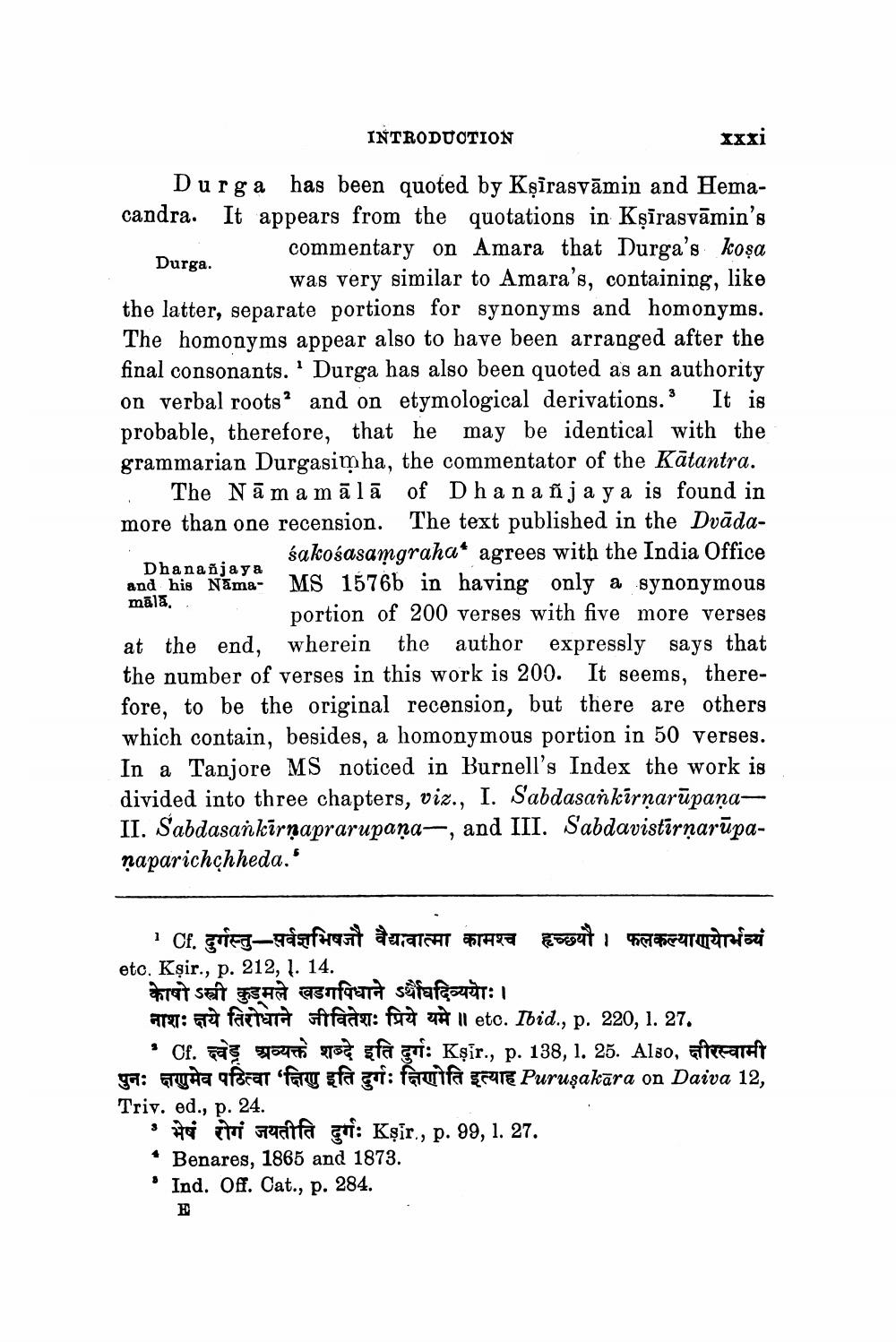________________
INTRODUCTION
Durga.
Durga has been quoted by Kșirasvāmin and Hemacandra. It appears from the quotations in Kșīrasvāmin's
commentary on Amara that Durga's koşa
was very similar to Amara's, containing, like the latter, separate portions for synonyms and homonyms. The homonyms appear also to have been arranged after the final consonants.' Durga has also been quoted as an authority on verbal roots? and on etymological derivations. It is probable, therefore, that he may be identical with the grammarian Durgasimha, the commentator of the Kātantra.
The Nāma mālā of Dhan a ñja ya is found in more than one recension. The text published in the Dvāda
śakośasamgraha* agrees with the India Office and his Nama- MS 1576b in having only a synonymous māla..
portion of 200 verses with five more verses at the end, wherein the author expressly says that the number of verses in this work is 200. It seems, therefore, to be the original recension, but there are others which contain, besides, a homonymous portion in 50 verses. In a Tanjore MS noticed in Burnell's Index the work is divided into three chapters, viz., I. Sabdasan kīrṇarūpanaII. Sabdasankīrṇaprarupaņa–, and III. Sabdavistīrṇarūpaņaparichchheda.'
Dhananjaya
1 Of. दुर्गस्तु-सर्वज्ञभिषजौ वैद्यावात्मा कामश्च हृच्छयौ । फलकल्याणयोर्भव्यं etc. Kşir., p. 212, 1. 14.
कोषोऽस्त्री कुडमले खडगपिधाने ऽर्थी दिव्ययाः। Fra: et faetara ofaan: fiat à ll etc. Ibid., p. 220, 1. 27.
• Cf. mag ute progfa gri: Kşir., p. 138, 1. 25. Also, afheart ga: muita afecar faru afar got: aula Gure Puruşakāra on Daiva 12, Triv. ed., p. 24.
sto ti feritfa gri: Kşir., p. 99, 1. 27. • Benares, 1865 and 1873.
Ind. Off. Cat., p. 284.




